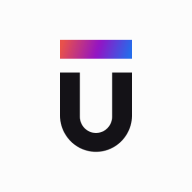

Find out in this report how the two Cloud Detection and Response (CDR) solutions compare in terms of features, pricing, service and support, easy of deployment, and ROI.
| Product | Market Share (%) |
|---|---|
| Upwind | 10.0% |
| Check Point CloudGuard Cloud Intelligence and Threat Hunting | 0.8% |
| Other | 89.2% |

Check Point CloudGuard Cloud Intelligence and Threat Hunting offers advanced analytics and threat detection for cloud environments, streamlining security management and enhancing threat prevention capabilities.
Designed for enterprises seeking robust security solutions, Check Point CloudGuard Cloud Intelligence and Threat Hunting leverages machine learning to analyze potential threats in cloud infrastructures. This tool enhances cloud security postures by identifying suspicious activities and providing deep insights, aiding security teams in responding to threats efficiently. It integrates seamlessly with existing security setups, offering comprehensive threat visibility and streamlined threat management.
What are the key features of Check Point CloudGuard Cloud Intelligence and Threat Hunting?In industries like finance and healthcare, Check Point CloudGuard Cloud Intelligence and Threat Hunting is implemented to safeguard sensitive data while ensuring compliance with regulatory standards. Its capabilities are crucial for maintaining high security in dynamic and data-sensitive environments, where vigilant threat detection and quick response are critical.
Upwind is an innovative platform designed to enhance efficiency and streamline operations, offering a comprehensive set of features tailored to tech-savvy users. It supports seamless integration, ensuring that businesses can optimize their workflows with minimal disruption.
Upwind stands out by providing solutions that address complex business challenges, delivering value through enhanced functionality and ease of use. Its ability to integrate with existing systems empowers users to tailor the platform according to specific operational needs. Users benefit from Upwind's user-friendly design, which facilitates quick adoption and minimizes the learning curve. The platform's adaptability makes it a valuable tool for businesses looking to increase agility and remain competitive in a rapidly evolving market.
What are Upwind's most valuable features?Upwind is implemented across industries like finance, manufacturing, and retail, where it supports diverse operational needs such as compliance, inventory management, and customer engagement. Businesses leverage Upwind to improve data accuracy, procedural efficacy, and customer satisfaction, demonstrating its versatility and effectiveness.
We monitor all Cloud Detection and Response (CDR) reviews to prevent fraudulent reviews and keep review quality high. We do not post reviews by company employees or direct competitors. We validate each review for authenticity via cross-reference with LinkedIn, and personal follow-up with the reviewer when necessary.